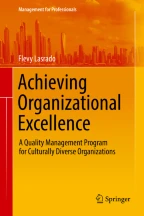
Over the last few years, quality management and business excellence frameworks have been extensively used on a transnational scale to drive organizational performance. In fact, managing quality is no more a choice but a necessity to compete in highly globalized environments. The good practices of internalizing quality continue to evolve in this dynamic business environment. Organizations that shed their rigidity are continually adapting and learning from within their organizations as well as from others and they thus manage ‘dynamic capabilities’ that then translates to a gain leading to competitive advantage. Although quality management may be viewed as both a catalyst and driver for change, implementation of these best practices, in a sustained manner, across organizations is a challenging task. It is thus crucial to undertake a self-assessment based on business excellence models so as to deeply implement ‘quality’ and excellence in an organization that operates in a diverse multicultural environment. This chapter introduces the foundations of business excellence and explains how the quest for excellence affects management at all levels and across all departments. The results of an empirical study are discussed to highlight some useful stages and practices for organizations at the start of their journey toward excellence. Theoretical models of business excellence are discussed that are useful for guiding an organization toward higher levels of maturity of organizational excellence. A case study is presented of the Tata Business Excellence Model, a framework for excellence in business performance that has been in use in Tata group companies for two decades.
This is a preview of subscription content, log in via an institution to check access.